The Best Sounding Digital Pianos for Intermediate Pianists
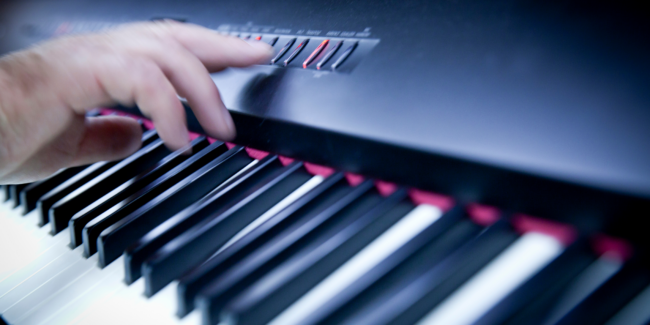
The market is full of digital pianos from different brands at different prices. While all the options are nice, this makes it extra-difficult to narrow down your choices and find the best option.
If you are looking at a digital piano, you’re probably less interested in how it looks in your room and more focused on how it will sound when you brush those ivories.
You don’t have to shell thousands of dollars to get a great-sounding digital piano. Still, you do get what you pay for to some extent. By investing a little more in your slab, you can get a piano with better technology and better sound.
So, that $50 model? It’s probably a “no.”
Here’s why.
- High-end digital pianos vs. low-end pianos: How does the price tag affect the sound quality?
- Buyer’s Guide: How to find digital pianos with the best sound.
- Best overall sound quality: Roland FP30X
- Most portable digital piano: Casio Privia PX-S1100
- Best digital piano for the home: Yamaha YDP103
- Find the best digital pianos and tickle those keys!
- FAQs.
High-end digital pianos vs. low-end pianos: How does the price tag affect the sound quality?
The sound of a digital piano comes from a recording of an acoustic piano (usually a grand piano). These sound samples are recorded at different velocities, and the “multi-samples” layer into the keys.
Two main factors that affect the sound of your digital piano are:
- The quality of the sample recordings and technology
- The memory capacity of your digital piano
Higher-tier digital pianos.
The higher the quality of the samples built into your digital piano, the better it will sound when you sit down to play. A mid to high-range piano will also be more responsive to your touch.
Well-built digital pianos take more time to record high-quality sounds and have the technology to store more sounds. This means you can get those loud fortissimos and soft pianissimos that make the piano so satisfying to play. You will also be able to play faster songs on the piano without your keyboard falling behind.
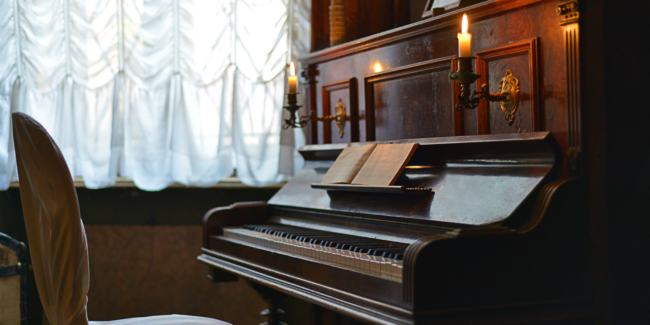
While a low-end piano, you may hear some tinniness or inconsistencies in sound, a pricier digital piano will be almost indistinguishable from an acoustic piano – even to the trained ear!
Lower-tier digital pianos.
Cheaper pianos often don’t have the storage capabilities of higher pianos. The manufacturers record fewer sounds and then stretch those sound samples to make up the difference to save on storage space. Lower-end pianos will have a more limited sound range, and the keys won’t be as responsive to your touch.
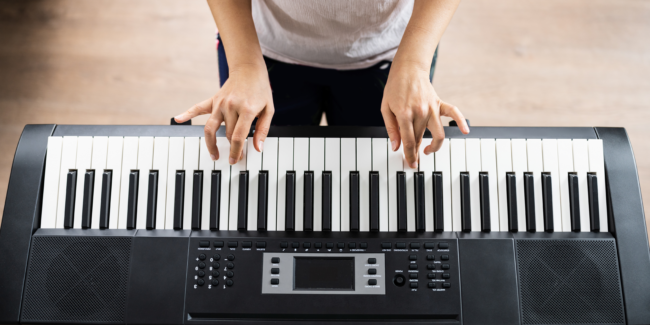
And, after you press a key, it won’t sustain the note as long as an acoustic piano or higher-tier digital piano. Some cheaper models can only maintain notes for three seconds and then loop the sound. This will sound a bit unnatural to the trained ear.
While a cheaper model may still get the job done, you may lose responsiveness and sound quality.
Buyer’s Guide: How to find digital pianos with the best sound.
We’ve found some solid intermediate digital pianos with good-quality sound at mid-range prices. Here are a few things to look for when searching for an intermediate digital piano with the best sound.

Polyphony.
Polyphony refers to how many sounds your piano can sustain at a time. In the world of acoustic pianos, polyphony is essentially unlimited. However, the technology can only support so many sounds at once on digital pianos.
Most high-end pianos have 128-note polyphony or above. This means that your keyboard can play back 128 notes at once. While this might sound like a lot, the space can fill up quickly as you layer your sounds.
Polyphony includes the notes and chords you play in both hands, added instruments, drums and strings, and even your metronome. So, while 128-note polyphony is plenty for the average pianist, you may find 48 or 64-note polyphony limiting.
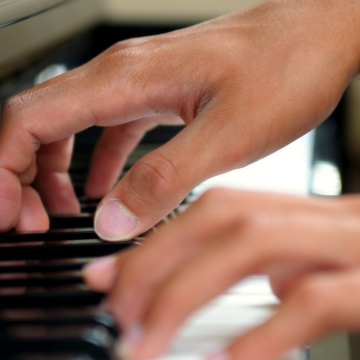
Key touch.
The touch is also an essential feature of a digital piano. Most digital pianos will have weighted keys to simulate the keys on an acoustic piano. However, some models take this the extra mile and place heavier weights on lower notes and lighter weights on the high notes to be even more accurate to the touch.
When you press a key, the sound should respond to the amount of pressure you use. This is one of the perks of buying a good-quality digital piano versus a keyboard where all the keys have the same relative volume.
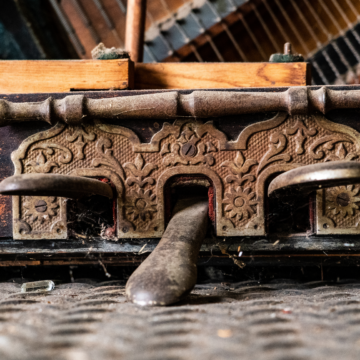
Pedals and add-ons.
Some digital pianos come with pedals or docks to add pedals later. If you love the smooth legato sounds, you may wish to choose a piano that comes with at least one pedal. Other add-ons you may find in a package are headphones and speakers.
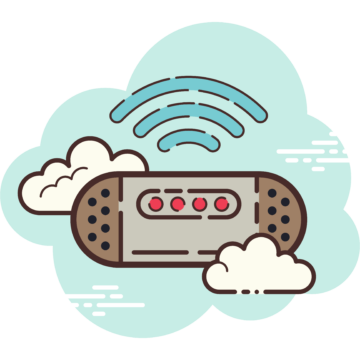
Portability.
While portability may not affect your sound quality, it is still a consideration to keep in mind when buying the best digital piano. If you want to take your tunes on the road and play at gigs or in your friend’s garage band, you’ll want to look for a portable model. However, if you plan to practice your keys in the comfort of your own home, you may choose a piano with a sturdy console.
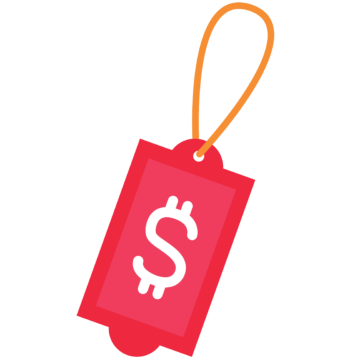
Price.
You can’t expect to get the best sound if you decide on your digital piano based on the lowest price. However, we realize that price might play an important role when choosing a piano.
You can get the best bang for your buck by purchasing a digital piano in a package. A package often includes a stand, pedals, bench, and headphones for a fraction of what it would cost to buy them separately. We tried to find digital pianos with prices under $1000 to be accessible to most piano players.
Best overall sound quality: Roland FP30X
This Roland FP30X comes as a package-deal with an adjustable stand and bench, plus a deluxe sustain pedal. The key hammer-action is responsive to your touch and gives you that natural ivory feels down to the key’s ‘click.’
You get an excellent authentic acoustic and sustained sound when you hold down a key. It also comes with 256-note polyphony, which gives you plenty of room to layer chords and sounds.
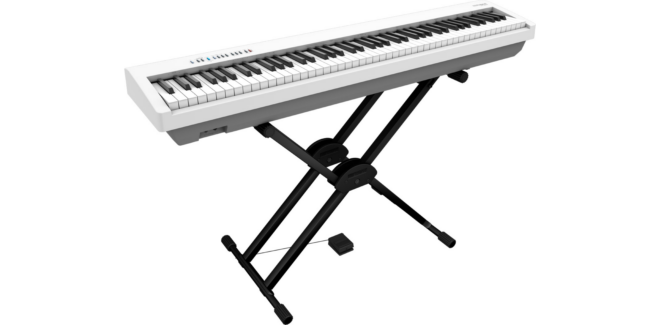
The Roland also has Bluetooth connectivity, making it easy to connect to smartphones and other devices. This lightweight 88-key digital piano is easy to transport and can easily fit into a tight corner in your home.
You can add other instrument sounds as you play and connect using a USB to save your creations. Or, you can play live using its 22-watt stereo speaker system to blast out the hits.
This 88-key digital piano is around $900. With the Roland FP30X, you will get high-quality sound, 256-note polyphony, and Bluetooth connectivity. This model has most of the features that an intermediate to the advanced piano player will need.
Most portable digital piano: Casio Privia PX-S1100
Casio’s Privia PX-S1100 design is the new and improved Privia PX-S1000. This new model packs a lot of great features in its super-slim, streamlined design. The sleek digital piano has fewer knobs and buttons, yet you can still use the function+key combinations to split the keyboard, layer sounds, and change the acoustic sound. It weighs less than 25 pounds, making it one of the most portable digital pianos.
Its Smart Scaled Hammer Action Keyboard gives you the feel of playing on real acoustic piano keys. You can choose from 18 different instrumental tones, with the German concert grand piano being a customer favorite.
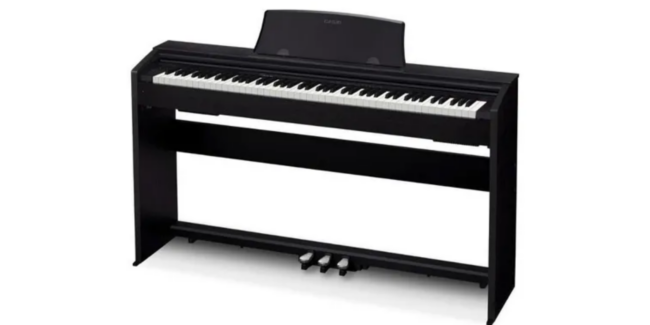
The internal speaker system has a decent stand-alone sound if you need to pack light and leave external amps at home. For practicing and warm-ups, you can plug in your headphones to the jacks so only you will hear the notes you play. Like the Roland, this digital piano also includes Bluetooth connectivity, MIDI capabilities, and a USB port to save your masterpieces.
This stylish slab comes in an eye-catching red, black, or white to make a statement in your home. Since this 88-key digital piano weighs less than 25 pounds, you can easily pack it and take it with you. You can switch to six AA batteries to go cordless, as well!
The Privia PX-S1100 is close to $750. We love that this model has weighted keys and a high-quality sound but still is lightweight so that you can carry it around.
Best digital piano for the home: Yamaha YDP103
The Yamaha YDP103 is a solid digital piano with a large fan base. This model gives you more of the classic piano look in its rose-wood-colored console and comes with three pedals. The black matte keys have a nice playable feel and won’t become slippery under your fingers. Like an authentic acoustic piano, the high keys are lighter, and the low notes are heavier.
The controller app for iOS devices has a straightforward graphical user interface that allows you to navigate easily through the sounds and options. You can play in dual mode to combine two instruments, such as a piano and strings.
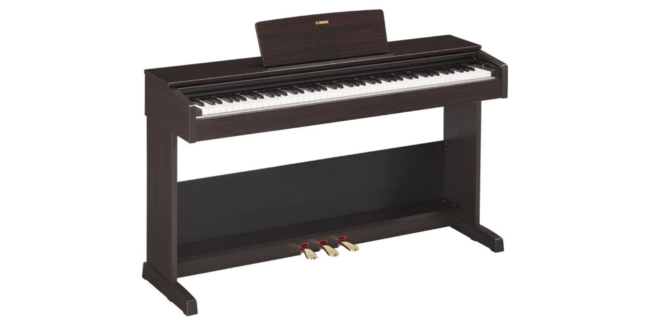
One drawback to this model is that you only get 64-note polyphony, and it has no playback or recording capabilities. Although the Yamaha is a more basic model than other digital pianos, it has a crisp acoustic sound and holds up well to years of practice.
The Yamaha comes just under $1000. We love the sturdiness of this digital piano and its weighted keys.
Find the best digital pianos and tickle those keys!
We’ve covered some basics so you can choose an intermediate digital piano with the best sound in your budget range. You can look for hammer-action keys, playback capabilities, Bluetooth connectivity, and high-range polyphony.
Some of our top picks in the digital piano category are the Roland FP30X, Casio Privia PX-S1000, and Yamaha YDP103. These models have a good-quality acoustic piano sound and can be satisfying to play.
However, there are many more options that you rate on your own using our Buyer’s Guide. We’d love to hear which digital piano you take home and your thoughts on it. Let us know in the comments.
Once you find your own set of keys, connect to our Simply Piano app to work up your skills!









